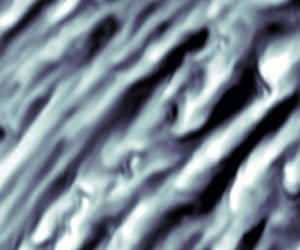Article contents
Transition mechanisms in cross-flow-dominated hypersonic flows with free-stream acoustic noise
Published online by Cambridge University Press: 04 June 2020
Abstract

Transition to turbulence in high-speed flows is determined by multiple parameters, many of which are not fully understood, leading to problems in developing physics-based prediction methods. In this contribution, we compare transition mechanisms in configurations with unswept and swept leading edges that are exposed to free-stream acoustic disturbances. Direct numerical simulations are run at a Mach number of six with the same free-stream noise, consisting of either fast or slow acoustic disturbances, with two different amplitudes to explore the linear and nonlinear aspects of receptivity and transition. For the unswept configuration, receptivity follows an established mechanism involving synchronisation of fast acoustic disturbances with boundary-layer modes. At high forcing amplitudes, transition proceeds via the formation of streaks and their eventual breakdown. In the swept case, the process of streak-induced transition is modified by the presence of a cross-flow instability in the leading-edge region. Linear stability analysis confirms the presence of a cross-flow mode as well as weaker first and second mode waves. Both fast and slow types of forcing independently stimulate an unusual transition mechanism involving significantly narrower streaks than those arising from the cross-flow instability behind the swept leading edge or those induced nonlinearly in the unswept case. In the observed transition process, the cross-flow mode leads to a thin layer of streamwise vorticity that breaks up under the influence of high spanwise wavenumber disturbances. These disturbances first appear in the leading-edge region.
- Type
- JFM Papers
- Information
- Copyright
- © The Author(s), 2020. Published by Cambridge University Press
References
- 13
- Cited by


